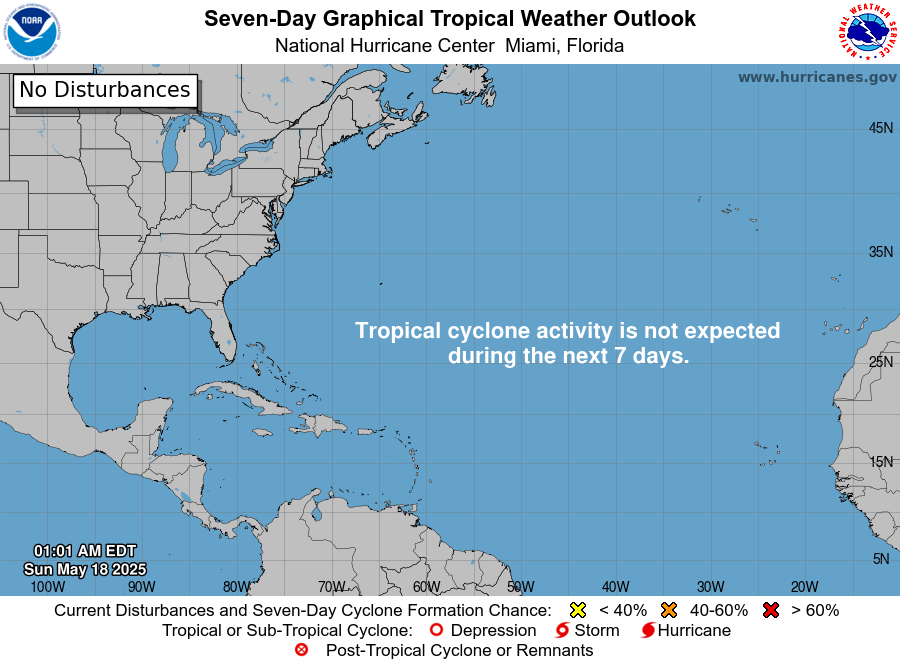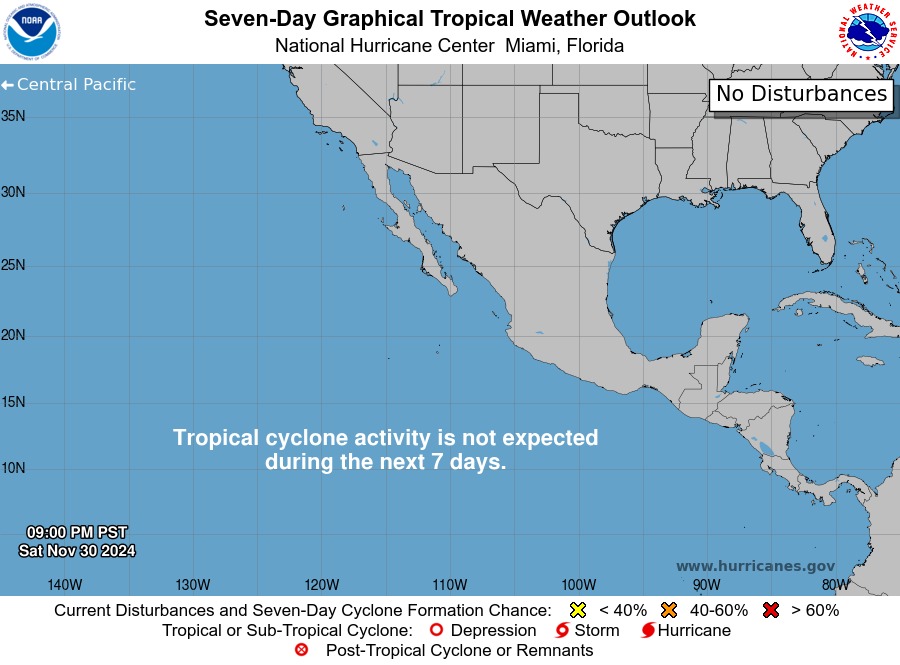This article focuses on what we are paying attention to in the next 48 to 72 hours. The article also includes weather maps for longer-term U.S. outlooks (up to four weeks) and a six-day World weather outlook which can be very useful for travelers.
First the NWS Short Range Forecast. The afternoon NWS text update can be found here after about 4 p.m. New York time but it is unlikely to have changed very much from the morning update. The images in this article automatically update.
Short Range Forecast Discussion
NWS Weather Prediction Center College Park MD
Mon Jan 20 2025
Valid 12Z Mon Jan 20 2025 – 12Z Wed Jan 22 2025…Dangerously cold temperatures in place from the Rockies to the East
Coast……Rare, significant winter storm to bring a swath of heavy snow as well
as areas of sleet and freezing rain to the Gulf Coast and Southeast……Extremely Critical Risk of Fire Weather for southern California
Monday…A bitterly cold arctic airmass has overspread the interior western,
central, and eastern U.S. following a strong cold front passage over the
weekend. Forecast high temperatures Monday from the Great Basin/Rockies
east to the East Coast will be upwards of 20-30 degrees below January
averages, ranging from the negative teens and single digits in the
northern Plains/Upper Midwest; the single digits and teens in the Rockies,
central Plains, and Midwest; the teens and 20s for New England and the
Mid-Atlantic; and the 20s and 30s for the Great Basin, southern Plains,
and Southeast. Life-threatening wind chills of 30 to 55 degrees below zero
at times are expected across the Rockies, northern Plains, and Upper
Midwest through Tuesday morning. Wind chills of this nature pose an
extreme risk of hypothermia and frost bite to exposed skin. Sub-zero wind
chills will reach as far south as the south-central Plains and east into
the Ohio Valley through Wednesday. Numerous Freeze Warnings are in place
along the Gulf Coast and northern Florida as sub-freezing morning lows
will pose a risk to sensitive vegetation and exposed plumbing for
locations not as accustomed to harsh Winter temperatures. Unfortunately,
these conditions look to remain in place across the eastern and southern
U.S. through the next few days. Upper-level ridging expanding across the
northwestern tier of the country will bring relatively warmer, more
seasonable Winter temperatures to portions of the Great Basin/Rockies as
well as the northern/central Plains on Tuesday, with highs back into the
20s, 30s, and 40s.In addition to the frigid temperatures, the combination of such cold air
reaching the Gulf Coast and a developing low pressure system will lead to
a rare, significant winter storm for the Gulf Coast States and Southeast.
Impacts will begin Monday evening across eastern and southern Texas,
spreading eastward along the Gulf Coast and through the Southeast through
Tuesday and Wednesday. Heavy snow is expected along and north of the
Interstate 10 corridor with swaths of sleet and freezing rain over
portions of southern Texas and southeast Georgia/northern Florida. Major
travel disruptions are likely and flight delays/cancellations are expected
given that these areas are not accustomed to impactful Winter weather.
Power outages in areas of significant snow and ice are possible, and will
exacerbate impacts from the frigidly cold temperatures that will also be
in place.Conditions will remain closer to average temperaure-wise for the West
Coast, particularly in California where forecast highs are in the 50s and
60s. Unfortunately, the mild temperatures as well as low humidity and the
return of very strong winds will lead to dangerous fire weather conditions
for southern California Monday into Tuesday. The Storm Prediction Center
has issued a Critical Risk of Fire weather (level 2/3) for southern
California as gusts to 60 mph for lower elevations and 75 mph and higher
in the foothills are expected. An Extremely Critical Risk (level 3/3) is
in place for the sensitive, ongoing fire areas of the San Gabriel and
Santa Monica Mountains.Elsewhere, bands of heavy lake effect snow will continue the next couple
of days for favorable downwind locations of the Great Lakes with
persistent northwesterly flow in place. An upper-level wave will encourage
snow showers with some accumulations possible for portions of the
central/southern Rockies and Plains on Monday, while a clipper system
dropping south from Canada will bring snow showers to the northern
Rockies/Plains and Upper Midwest Tuesday into Tuesday night.
To get your local forecast plus active alerts and warnings click HERE and enter your city, state or zip code. If the Hazards Outlook is not updated click here but remember it does not update during the weekend.
Learn about wave patterns HERE.
Then, looking at the world and of course, the U.S. shows here also. Today we are looking at precipitation.
Please click on “Read More” below to access the full Daily Report issued today.
| Notices: What would you like to learn about? Please provide that to me via the comment section at the end of the article. |
Now more detail on the 48-Hour Forecast (It is a 48 to 72 Hour Forecast actually)
Daily weather maps. The Day 1 map updates twice a day and the Day 2 and 3 maps update only once a day. These maps update automatically. But if that does not happen, you can get updates by clicking HERE
TODAY (or late in the day the evening/overnight map will appear) (Key to surface fronts shown on maps and you will then also be able to insert a city name or zip code and get a local NWS forecast).

TOMORROW

NEXT DAY

We have a new animation of the forecast which shows how things may play out over the next 60 hours. To update click ANIMATION. Doing so will get you to the dashboard. You can then step through the animation or hit LOOP on the upper right of the display. You will have to hit the back arrow ← at the top left on your computer to get back into this article. It is a little more trouble than before but I think NOAA scrapped the animation routine I was using so we have to keep up with “progress”.
The NWS Climate Prediction Center’s: Watches, Warnings, and Advisories plus other information can be found HERE. That takes you to the NWC Severe Weather Site. From there you can select among many categories of information. Remember to hit the back arrow ← at the top left of your screen to return to this article.
ATMOSPHERIC RIVERS
This tells us what is approaching the West Coast. Click HERE to update If I have not gotten around to doing the update. Here is some useful information about Atmospheric Rivers.

Below is the current five-day cumulative forecast of precipitation (Updates can be found HERE)

Ski SnowReports
New Feature – Ski Reports. It is difficult to find reports that auto-update on-screen (and they are very long) but these links will get you to them – If you have additional suggestions make them in the comments section after every Econcurrents Article and we may add those links. We will try to not have too much overlap as that can add to the confusion.
Snow Forecasts. And remember this shows natural snow. Ski resorts also make their own snow.
Day 1

Day 2

Now we look at Intermediate-Term “Outlook” maps for three time periods. Days 6 – 10, Days 8 – 14, and Weeks 3 and 4. An outlook differs from a forecast based on how NOAA uses these terms in that an “outlook” presents information as deviation from normal and the likelihood of these deviations.
Below are the links to obtain updates and additional information. They are particularly useful if you happen to be reading this article significantly later than when it was published. I always try to provide readers with the source of the information in my articles. These links may also be useful for those viewing this article on a cell phone or other small screen.
| Days 6 – 10 (shown in Row 1) | Days 8 – 14 (Shown in Row 2) | Weeks 3 and 4 (Shown in Row 3 but updates only on Fridays) |
| https://www.cpc.ncep.noaa. gov/products/predictions/610day/ | https://www.cpc.ncep .noaa.gov/products/predictions/814day/ | https://www.cpc.ncep.noaa.gov/products/predictions/WK34/ |
Showing the actual maps. They should now update automatically. The Week 3 – 4 Outlook only updates on Fridays. So below is what I call the Intermediate-term outlook. On Fridays, it extends out 28 Days. That declines day by day so on Thursday it only looks out 22 days until the next day when the Week 3 – 4 Outlook is updated and this extends the outlook by one additional week.
| 6–
10
|
|
|
| 8–
14 |
|
|
| 3–
4 |
|
|
HAZARDS OUTLOOKS
Click here for the latest complete Day 3 -7 Hazards forecast which updates only on weekdays. Once a week probably Monday or Tuesday I will update the images. I provided the link for readers to get daily updates on weekdays. Use your own judgment to decide if you need to update these images. I update almost all the images Friday Night for the weekend edition of this Weather Report. So normally readers do not need to update these images but if the weather is changing quickly you may want to.

Temperature month to date can be found at https://hprcc.unl.edu/products/maps/acis/MonthTDeptUS.png
Precipitation month to date can be found at https://hprcc.unl.edu/products/maps/acis /MonthPNormUS.png
World Forecast [that website is has been intermittent so be patient]
Below are the Day 1 -3 and 4-6 forecasts for temperature and precipitation. Updates and much additional information can be obtained HERE
World Temperature Anomalies


World Accumulated Precipitation


This information is provided by the University of Maine. They draw upon many different sources. There is a lot of information available at the link provided. I have just provided two useful forecasts. There are probably over a hundred different forecasts available from this source.
Worldwide Tropical Forecast (This is a NOAA Product)
This graphic updates on Tuesdays) If it has not been updated, you can get the update by clicking here Readers will only have to do that if they are reading this article much later than the date of it being published.
Information on Tropical Storms can be found HERE. Western Pacific information can be found HERE. Note that unless there is an out-of-season storm the below images will not update until the National Hurricane Center starts their seasonal update of these maps on June 1. I include them simply because there can be an out-of-season event in which case it should show up in these maps.


–
| I hope you found this article interesting and useful. |








